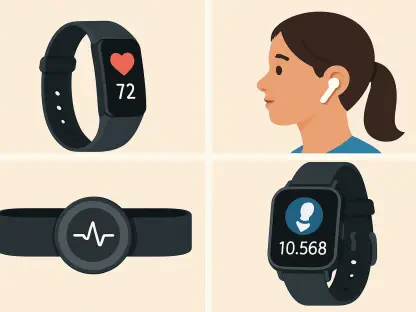The latest Apple Event has brought exciting news for tech enthusiasts and Apple aficionados alike. Among the highlights are the official announcements of the iPhone 16 series and Apple Watch Series 10, along with the much-anticipated release of iOS 18. This major update introduces a range of new features aimed at enhancing user experience, adding extensive customization options, and incorporating cutting-edge artificial intelligence capabilities. But what exactly does iOS 18 offer, and will your device be compatible? Let’s dive in.
Introduction to iOS 18
With the unveiling of iOS 18, Apple has once again set a new standard for user interaction and device functionality. The update promises significant changes that cater to both casual users and tech-savvy individuals.
Key Features of iOS 18
iOS 18 comes loaded with new functionalities designed to make daily tasks more seamless and enjoyable. One of the standout features is the ability to extensively customize the home screen and control center. This means users can personalize their phone layouts like never before. Another welcome addition is the ability to lock and hide apps, providing an extra layer of privacy and security.
The Photos app has also undergone an overhaul, aimed at making navigation and photo management more intuitive. Additionally, Apple’s AI system—Apple Intelligence—plays a pivotal role in enhancing these functions, adding capabilities like quick text summarization in Safari and intelligent image creation within the Messages app. These improvements point to a more efficient, personalized user experience, powered by AI.
Compatibility with Existing Devices
The question on everyone’s mind is, “Will my iPhone support iOS 18?” The good news is that any iPhone currently running iOS 17 will also be compatible with iOS 18. This includes a wide array of devices, from the iPhone XS series all the way to the latest iPhone 16 models. This broad compatibility ensures that a large number of users can benefit from the new update without feeling left behind.
Apple Intelligence: What It Brings to the Table
Apple Intelligence is Apple’s latest foray into artificial intelligence, designed to revolutionize how users interact with their devices. This advanced AI system is embedded within iOS 18, but it’s not available for all iPhone models.
Exclusive Features and Functions
Apple Intelligence brings a series of transformative features that aim to enhance user convenience. Among these, the ability to quickly summarize text in Safari stands out, offering a streamlined way to digest information. Within Messages, the AI can create personalized images, adding a unique touch to your conversations. Siri also gets a boost, now capable of performing more complex tasks thanks to the integration of Apple Intelligence.
However, these features are reserved for the latest iPhone models, specifically the iPhone 15 Pro, iPhone 15 Pro Max, iPhone 16, iPhone 16 Plus, iPhone 16 Pro, and iPhone 16 Pro Max. This selective availability is due to the advanced A17 Pro processor found in these devices, which is required to leverage the full potential of Apple Intelligence.
Hardware Necessities
The A17 Pro processor isn’t just another chip; it represents a significant leap in processing power and efficiency. This advanced hardware component is the backbone of Apple Intelligence, enabling features like real-time text summarization and complex task execution. The need for such high-level hardware justifies why Apple Intelligence is limited to select models, highlighting an industry trend where new software capabilities often hinge on the latest hardware advancements.
iPadOS 18: Parallel Advancements for iPads
Alongside iOS 18, Apple also introduced iPadOS 18, bringing similar enhancements to the iPad lineup. This update aims to make iPads more versatile and efficient, particularly for educational and professional use.
Enhanced Features Tailored for iPads
iPadOS 18 incorporates many of the same features introduced in iOS 18, but with additional functionalities tailored for the larger screen. One such feature is Smart Script, which enhances writing and note-taking capabilities. The update also brings a long-awaited Calculator app and Math Notes with Apple Pencil, useful for both students and professionals.
The Document Browser sees an overhaul, making file management more intuitive, while a redesigned tab bar for apps provides a cleaner, more organized interface. These enhancements are geared towards making the iPad a more powerful tool for productivity and creativity.
Compatibility with Existing iPads
Just like with iOS 18, Apple has ensured a broad range of compatibility for iPadOS 18. The list of compatible iPads spans from the iPad Pro (M4) and iPad Pro 12.9-inch (3rd gen+) down to the iPad mini (5th gen+). This extensive support underlines Apple’s commitment to providing software updates across multiple generations of devices, ensuring that users can enjoy new features without having to immediately upgrade their hardware.
Broader Impact of the Updates
The recent Apple Event has generated a great deal of excitement among tech enthusiasts and Apple fans. A slew of impressive announcements was made, including the highly-anticipated iPhone 16 series and the Apple Watch Series 10. Additionally, Apple unveiled iOS 18, a major software update packed with new features designed to elevate the user experience.
iOS 18 brings a range of enhancements, including extensive customization options, which allow users to personalize their devices like never before. The update also incorporates advanced artificial intelligence capabilities to provide a smarter and more intuitive experience. Users can look forward to improved performance across a variety of applications and services, thanks to these cutting-edge updates.
Naturally, one of the key questions on everyone’s mind is whether their current device will be compatible with iOS 18. Typically, Apple ensures that new iOS updates support a wide range of devices, but it’s always wise to check the official compatibility list. If you’re eager to explore what iOS 18 has to offer, you’ll want to verify that your device is up to the task.









